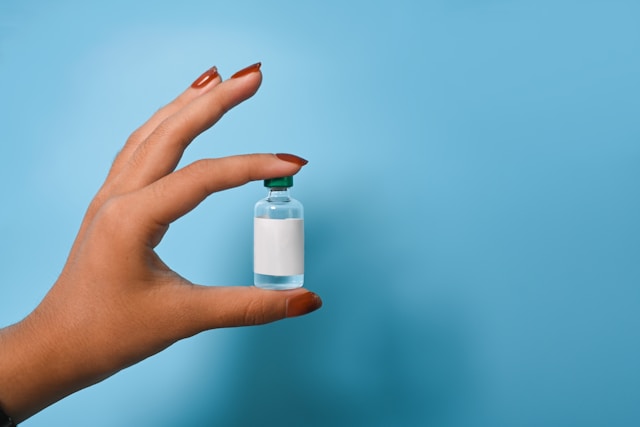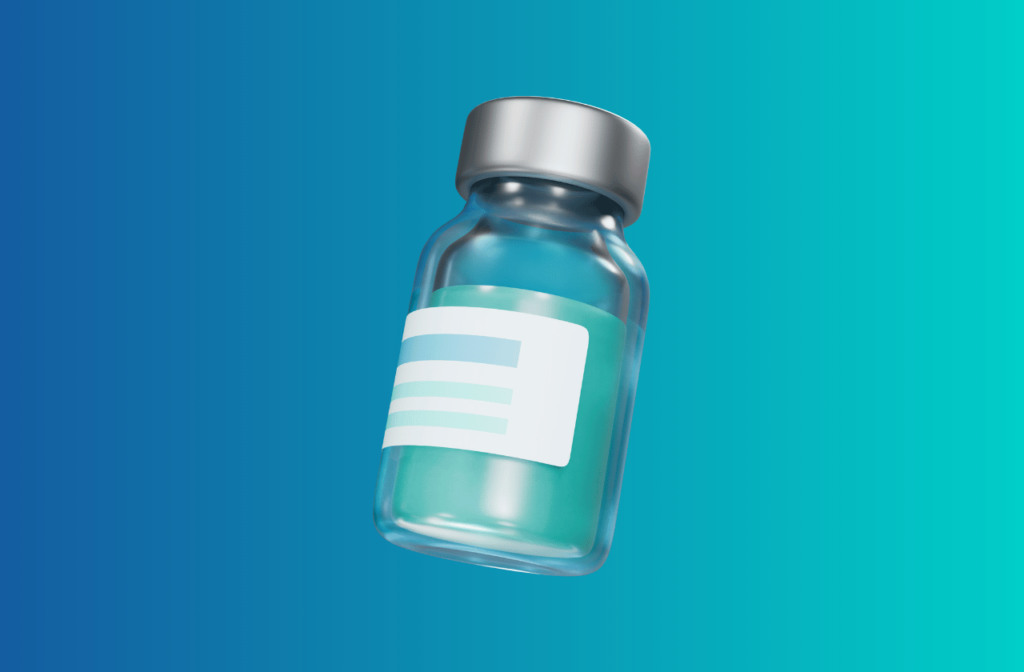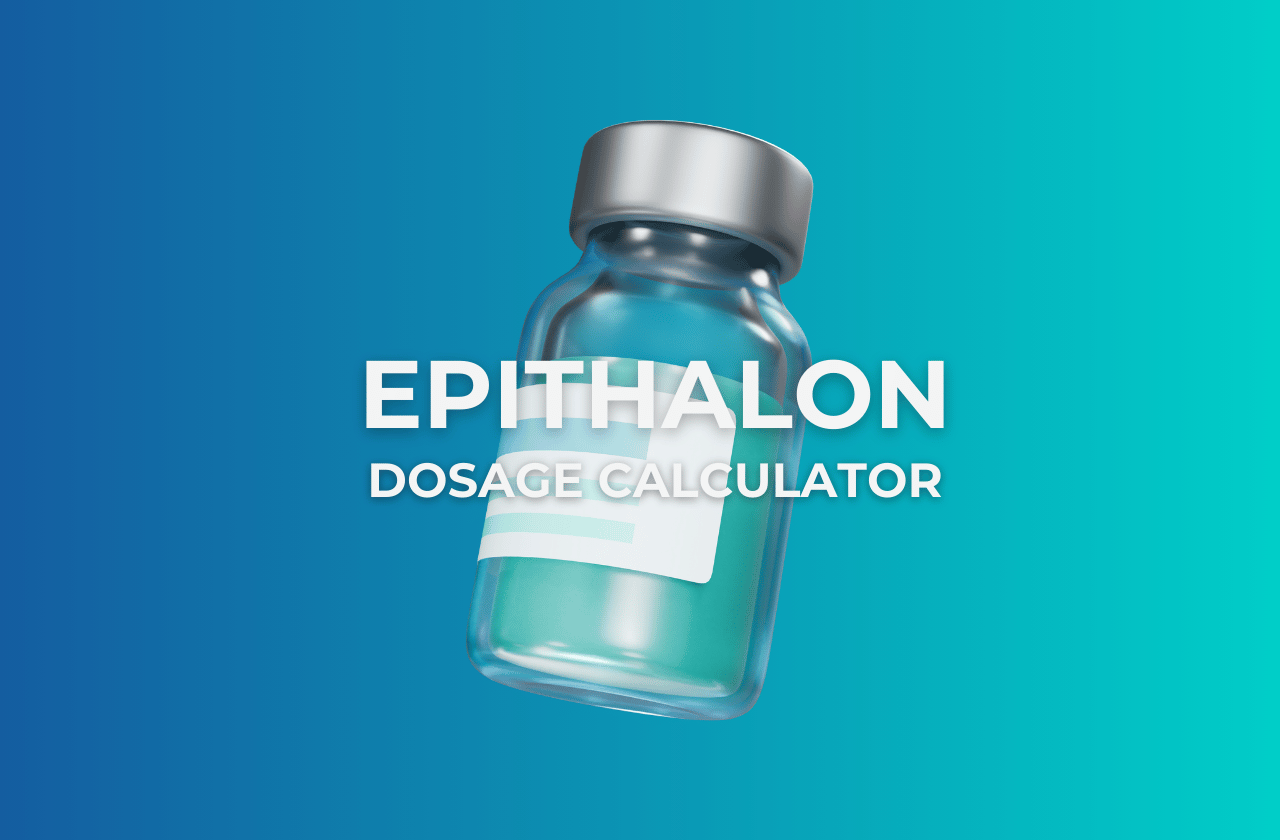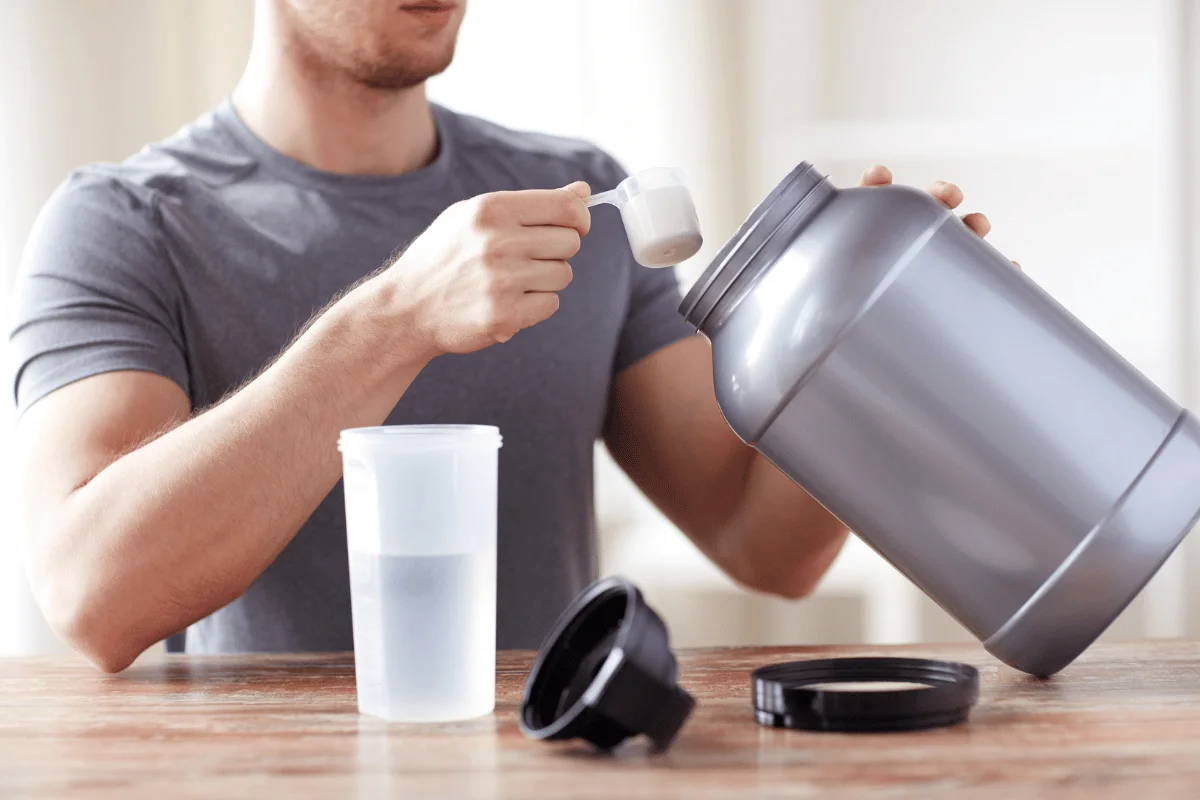[Disclaimer: This article is for informational purposes only and does not constitute medical advice. Always consult with a qualified healthcare provider before starting any peptide therapy.]
If you’ve been exploring the frontier of anti-aging research, you’ve likely come across Epithalon. This fascinating peptide has been generating buzz in longevity circles, and for good reason.
But with all the information (and misinformation) floating around, how do you separate fact from fiction when it comes to proper dosing and administration?
Consider this your comprehensive guide to Epithalon dosing protocols, benefits, and practical administration information for clinics based on current scientific research.
Key Considerations
- Legal status: Epithalon’s legal status varies by country. In the US, it’s typically categorized as a research peptide, not approved for human consumption but legal for research purposes.
- Quality concerns: It’s critical to source Epithalon from reputable suppliers to avoid contaminated or low-purity products that may pose health risks. The peptide market is unfortunately filled with products of questionable quality. At AllAboutPeptides.com, we recommend BioLongevity Labs as a vetted peptide vendor with robust quality certifications and USA-only manufacturing.
- Drug interactions: Limited data exists on potential interactions with medications, indicating the need for caution when combining with other treatments. Always consult a healthcare provider before combining Epithalon with other medications.
- Medical supervision: Given its effects on fundamental biological processes, Epithalon administration is best conducted under medical supervision. This isn’t a peptide to experiment with casually.
What is Epithalon?
Let’s start with the basics. Epithalon (also known as Epitalon or Epithalone) is a synthetic tetrapeptide consisting of four amino acids: alanine, glutamic acid, aspartic acid, and glycine (Ala-Glu-Asp-Gly). It wasn’t created yesterday—this peptide has quite a history behind it.
Epithalon was developed by Professor Vladimir Khavinson in the 1980s and is derived from epithalamin, a polypeptide originally extracted from bovine pineal glands. With a chemical formula of C14H22N4O5 and a molecular weight of 390.35 g/mol, this peptide has been extensively researched, particularly in Russia, where multiple human and animal studies have explored its effects on aging and longevity.
What makes Epithalon particularly interesting in anti-aging research is its primary mechanism: stimulating telomerase production. Telomerase is an enzyme that extends telomeres, those protective caps at the end of chromosomes that shorten with each cell division and are associated with the aging process. By potentially extending telomere length, Epithalon may help slow cellular aging.
How Epithalon Works in the Body
Understanding how Epithalon functions can help you appreciate its potential benefits. The peptide works through several key mechanisms:
- Telomerase activation: Perhaps its most notable function, Epithalon upregulates telomerase activity, which helps maintain or extend telomere length. This may directly impact cellular aging by preserving the integrity of chromosomes through more cell divisions.1
- Pineal gland modulation: Epithalon influences the pineal gland’s function, helping regulate melatonin production. This affects your sleep-wake cycles and may explain some of the sleep-enhancing effects reported by users.
- Neuroendocrine regulation: The peptide enhances the sensitivity of the hypothalamus to hormonal signals and helps balance anterior pituitary function. This regulatory effect can have far-reaching consequences throughout the body’s hormonal systems.
- Antioxidant activity: Epithalon reduces lipid oxidation and reactive oxygen species (ROS), while also normalizing T cell function. This antioxidant capacity may protect cells from oxidative damage, a key factor in aging.
Potential Benefits of Epitalon Peptide
Research and clinical observations have identified numerous potential benefits that make Epithalon worth considering in any serious anti-aging protocol.
Short-Term Benefits (Days to Weeks)
- Sleep Improvements: Epithalon boosts melatonin, helping you fall asleep faster and stay asleep longer.2 Better sleep means your body can repair itself more effectively each night.
- Antioxidant Effects: Studies show Epitalon might act as an antioxidant while also promoting protective enzymes like superoxide dismutase. This combination helps defend cells against damage.3
Medium-Term Benefits (Weeks to Months)
- Brain Function: Sibarov’s research discovered that Epitalon increased brain cell activity in animal studies. This suggests it might support cognitive function.4
- Immune System Support: Epitalon may help normalize T cell function as we age. Since immune function naturally declines over time, this could help fight illness and infection.5
Long-Term Benefits (Months to Years)
- Cellular Health: Studies reported fewer chromosome problems in animals given Epithalon, suggesting it might help protect DNA.6 This could be important for many aspects of health as you age.
- Disease Resistance: In one human study, people taking epithalamin (Epithalon’s parent compound) for 2-3 years showed lower rates of heart disease, high blood pressure, and joint problems compared to control groups.7
- Longevity and Anti-Aging: In the same Khavinson study, elderly subjects treated for 2-3 years had significantly lower mortality rates and longer lifespan than untreated groups.7
- Reproductive Health: Korenevsky’s research found that Epitalon influenced reproductive function in animals exposed to environmental factors like light pollution, showing its potential across different body systems.8
Third-Party Tested, 99% Purity
Order lab-verified peptides from our top recommended vendor.

Epithalon Dosage Protocols
Now let’s get to the practical aspects of using Epithalon. There are two primary dosing protocols that have emerged from Epitalon peptide therapy research:
The Russian Protocol
This is a shorter, more intensive regimen:
- Total Required: 100mg Epithalon
- Dosing Schedule: 10mg daily (either once at bedtime or split into two injections – morning and bedtime)
- Duration: 10 days
- Frequency: Up to twice per year, with a minimum 4-6 month break between cycles
The Ukrainian Protocol
This approach requires less total Epithalon:
- Total Required: 50mg Epithalon
- Dosing Schedule: 10mg on days 1, 5, 9, 13, and 17
- Duration: 17 days
- Frequency: Up to twice per year, with a minimum 4-6 month break between cycles
Purpose-Specific Dosing
Alternative dosing schedules based on specific therapeutic goals include:
| Purpose | Dosage Range | Frequency | Administration |
|---|---|---|---|
| General Anti-Aging | 5-10 mg | Once daily for 10-20 days | Subcutaneous injection |
| Sleep Improvement | 5-10 mg | Once daily before bed | Subcutaneous injection |
| Immune Enhancement | 10 mg | Once daily for 10 days | Subcutaneous injection |
| Research Protocols | 0.1-10 mg/kg | As per specific protocol | Subcutaneous/Intraperitoneal |
Some practitioners recommend starting with lower doses (5mg) and gradually increasing as tolerance is established. For higher doses, splitting the administration (morning and night) may be preferable to maintain more consistent levels throughout the day.
Dosage Calculator and Reconstitution Guide
Peptide Reconstitution Calculator
What is the total volume of your syringe?
Select Peptide Vial Quantity
How much bacteriostatic water are you adding?
Concentration: 5.000 mg/mL (5000 mcg/mL)
How much of the Peptide do you want in each dose?
Draw up: 0.010 mL to get 50 mcg
Insulin syringe: 1.0 units (if using a U-100 syringe)
To have a dose of 50 mcg pull the syringe to 5
Proper reconstitution is critical for accurate dosing. Here’s how to approach it:
Reconstitution Instructions
For 50mg Epithalon vial:
- Inject 2.5ml of bacteriostatic water into the vial (creating a 20mg/ml concentration)
- This equals 250 units on an insulin syringe
For 10mg Epithalon vial:
- Follow the specific reconstitution instructions provided with your product
- Typically, bacteriostatic water is added to achieve the desired concentration
Using a Peptide Calculator
To calculate precise Epithalon dosages:
- Enter your peptide strength (typically 10mg or 50mg per vial)
- Enter the amount of bacteriostatic water added (e.g., 2.5ml for a 50mg vial)
- Enter your desired dose (e.g., 10mg)
- The calculator will determine how much solution to draw into your syringe
For example, with a 50mg vial reconstituted with 2.5ml of water (20mg/ml concentration), a 10mg dose would require drawing 0.5ml (50 units on an insulin syringe).
Practical Dosage Example
Following the documented regimen from Happy Hormones MD:
- Recommended dose: 10mg (0.5ml or 50 units) subcutaneously at bedtime
- Administration schedule: Every other day for 10 days
- Cycle frequency: Twice per year
Administration Guide

Administration Methods
Epithalon can be administered through several routes:
- Subcutaneous injection (most common): Injected into the fatty tissue of the abdomen or thigh. This is the administration method with the most research behind it and generally considered the most reliable for absorption.
- Intranasal application: Some formulations are available as nasal sprays, though these may have different absorption rates and may not deliver the same consistent dosing as subcutaneous administration.
Best Practices for Administration
- Timing: The ideal time for Epithalon administration is 1-2 hours before bedtime, especially when targeting sleep improvements. This timing aligns with the body’s natural melatonin production cycle.
- Storage: Store lyophilized (powder) Epithalon at -20°C (-4°F). Once reconstituted with bacteriostatic water, store in a refrigerator (2-8°C or 36-46°F) and use within 30 days. Always protect from light and excessive heat.
- Sterile technique: Use alcohol prep pads, wear gloves, and follow proper sterile procedures when reconstituting and injecting Epithalon to prevent contamination. This isn’t just good practice—it’s essential for safety.
- Injection rotation: Rotate injection sites to minimize potential irritation or skin reactions. Don’t repeatedly inject into the same area.
- Equipment needed:
- Bacteriostatic water
- Insulin syringes
- Alcohol prep pads
- Sterile empty glass vials (if transferring)
- Larger needles for reconstitution
Safety Profile and Considerations
Safety Data
Epithalon has demonstrated a favorable safety profile in research, with no major side effects reported in long-term administration. The strongest safety data comes from two 3-year epithalamin treatment trials in elderly adults, one with a 12-year follow-up. In these studies, researchers noted not only a lack of adverse events but also significantly lower mortality in treated patients compared to control groups.
Potential Side Effects of Epitalon
While generally well-tolerated, potential side effects may include:
- Injection site reactions (itching, swelling, pain, inflammation)
- Headache
- Dizziness
- Fatigue
Bottom Line
Epithalon represents a fascinating area of anti-aging research with promising benefits for longevity, sleep quality, and overall cellular health. The peptide’s ability to potentially influence telomere length addresses one of the fundamental mechanisms of aging, making it a subject of significant interest in longevity science.
The established dosage protocols—particularly the Russian and Ukrainian methods—provide structured approaches to Epithalon administration, typically involving cyclic use of 5-10mg daily doses for limited periods, with extended breaks between cycles. Proper reconstitution and administration techniques are essential for both safety and efficacy.
While the research, especially from Russian scientists, shows promising results, it’s important to note that much of this research awaits independent confirmation from other scientific communities. Additionally, the hypothesis connecting telomere elongation to slowed aging continues to be investigated.
For those interested in Epithalon’s potential, consulting with healthcare providers knowledgeable about peptide therapies is advisable to ensure proper use and monitoring of this promising but still experimental compound.
Frequently Asked Questions
1. How long does it take to see results from Epithalon?
Results from Epithalon can vary significantly between individuals. Some people report noticeable improvements in sleep quality within the first week of use, while more substantial benefits related to cellular health and anti-aging effects may take multiple cycles to become apparent. Research studies typically evaluated subjects after 2-3 years of cyclical treatment, suggesting that patience and consistency are important when using this peptide.
2. Can Epithalon be used alongside other peptides?
Yes, Epithalon is often used as part of a broader peptide protocol. It’s commonly stacked with other peptides like GHK-Cu, BPC-157, or TB-500, depending on specific health goals. However, it’s important to consult with a knowledgeable healthcare provider before combining multiple peptides, as there’s limited research on some of these combinations, and they may have synergistic or conflicting effects.
3. Is Epithalon suitable for everyone?
While Epithalon appears to have a good safety profile based on available research, it may not be appropriate for everyone. Pregnant or breastfeeding women, individuals with hormone-sensitive conditions, active cancer, or those with compromised immune systems should generally avoid Epithalon until more research is available. Additionally, those under 40 may not experience the same benefits as older individuals, though this varies based on individual health status and goals.
4. How should Epithalon be cycled for optimal results?
Most protocols recommend using Epithalon for 10-20 days, followed by a break of at least 4-6 months before the next cycle. This cycling approach allows the body time to respond to the peptide while minimizing the potential for adaptation or diminishing returns. Some practitioners suggest twice-yearly cycles (spring and fall) to align with natural circadian and seasonal rhythms.
5. What’s the difference between Epithalon and other longevity peptides?
Epithalon stands out among longevity peptides due to its specific action on telomerase activation and pineal gland function. While peptides like Semax, Selank, or BPC-157 may support various aspects of health and recovery, Epithalon is one of the few that directly addresses telomere length—a fundamental marker of cellular aging. Additionally, its effects on melatonin production give it unique benefits for sleep and circadian rhythm regulation that aren’t found in many other peptides.
References
- Khavinson, V. K.h, Kuznik, B. I., Tarnovskaia, S. I., & Lin’kova, N. S. (2014). Advances in gerontology = Uspekhi gerontologii, 27(3), 399–406. ↩︎
- Korkushko, O. V., Khavinson, V. K.h, Shatilo, V. B., & Magdich, L. V. (2004). Effect of peptide preparation epithalamin on circadian rhythm of epiphyseal melatonin-producing function in elderly people. Bulletin of experimental biology and medicine, 137(4), 389–391. https://doi.org/10.1023/b:bebm.0000035139.31138.bf ↩︎
- Kozina, L. S., Arutjunyan, A. V., & Khavinson, V. K.h (2007). Antioxidant properties of geroprotective peptides of the pineal gland. Archives of gerontology and geriatrics, 44 Suppl 1, 213–216. https://doi.org/10.1016/j.archger.2007.01.029 ↩︎
- Sibarov, D. A., Vol’nova, A. B., Frolov, D. S., & Nozdrachev, A. D. (2007). Effects of intranasal administration of epitalon on neuron activity in the rat neocortex. Neuroscience and behavioral physiology, 37(9), 889–893. https://doi.org/10.1007/s11055-007-0095-3 ↩︎
- Lin’kova, N. S., Kuznik, B. I., & Khavinson, V. K.h (2012). Advances in gerontology = Uspekhi gerontologii, 25(3), 478–482. ↩︎
- Rosenfeld, S. V., Togo, E. F., Mikheev, V. S., Popovich, I. G., Khavinson, V. K.h, & Anisimov, V. N. (2002). Effect of epithalon on the incidence of chromosome aberrations in senescence-accelerated mice. Bulletin of experimental biology and medicine, 133(3), 274–276. https://doi.org/10.1023/a:1015899003974 ↩︎
- Khavinson, V. K.h, & Morozov, V. G. (2003). Peptides of pineal gland and thymus prolong human life. Neuro endocrinology letters, 24(3-4), 233–240. ↩︎
- Korenevsky, A. V., Milyutina, Y. P., Bukalyov, A. V., Baranova, Y. P., Vinogradova, I. A., & Arutjunyan, A. V. (2013). Advances in gerontology = Uspekhi gerontologii, 26(2), 263–274. ↩︎








